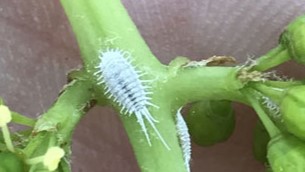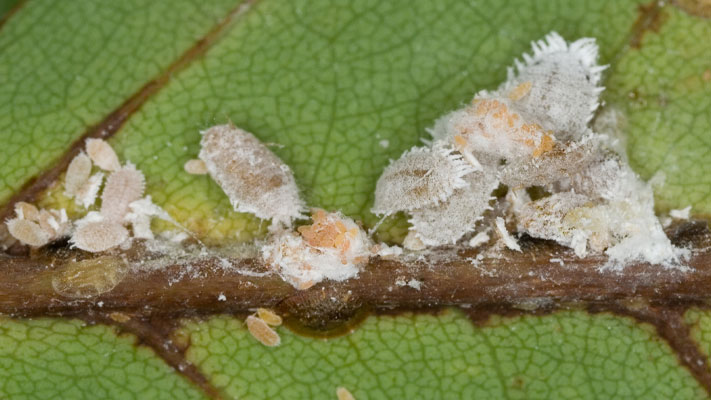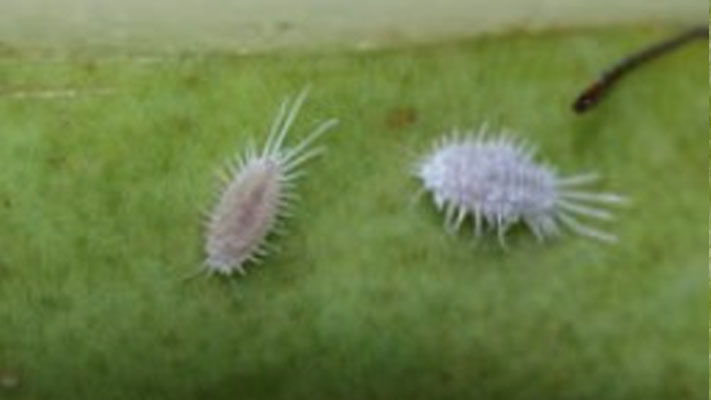Longtailed mealybug
Pseudococcus longispinus
Being present in many Australian grape growing regions, longtailed mealybugs are generally not a major issue, but in certain circumstances can become a significant problem for vignerons. Like scale pests, mealybug feed on the plant’s sap, excreting honeydew as a waste product. The honeydew provides a food source for ants, but also a medium for sooty mould to grow on. This sooty mould can be a contaminant in the wine production process or affect the appearance of table grapes, leading to the downgrading of fruit. Mealybugs, including longtailed mealybugs, are also found in other crops including citrus, apples, pears, peaches, nectarines, plums and apricots, where contamination and appearance issues from sooty mould can impact fruit quality.
Refer to the links below on different mealybug species.
Refer to the links below on different mealybug species.

Description
Adult female longtailed mealybugs are distinguished from other mealybug species by their long anal filaments which are fine and often longer than the length of their body. Mealybugs are approximately 3-4 mm long and are covered in a white mealy wax, which acts as a protective layer. If squashed, their body contents are a yellow colour.
Rather than producing eggs like other mealybugs, longtailed mealybugs produce live young that are less than 1 mm long. These groups of crawlers remain under their mother’s body before they disperse, seeking feeding sites such as the underside of leaves, a grape bunch or the stem end of stone fruits such as plums as well as the calyx end of pome fruit.
Control
Mealybugs can be controlled by encouraging predators such as ladybird beetles, predatory beetles, lacewing larvae and parasitoid wasps and by the considered use of insecticides targeted at the juvenile life stages. However, focusing control on chemicals can be problematic for a number of reasons as their waxy coating repels sprays and spray contact can be difficult. It is therefore important to strategically apply an insecticide based on its attributes.Movento being a systemic product should be targeted at the juvenile stage of the insect allowing the insect to ingest the product through feeding on the plant parts. Movento® is soft on many beneficial insects, including parasitic wasps, pirate bugs, hoverflies and lacewings. It is registered for the control of longtailed mealybug in grapes, pome and stone fruit and should be applied at the onset of crawler emergence.
Confidor® is registered for the control of longtailed mealybug in ornamental plants.
References
Department of Primary Industries (2005), ‘Long tailed mealy bug’, https://www.dpi.nsw.gov.au/agriculture/horticulture/citrus/content/insects-diseases-disorders-and-biosecurity/inect-pest-factsheets/long-tailed-mealy-bugDPIRD (2018), ‘Mealybugs in grapevines and deciduous fruit tree crops’.
SARDI (2016), ‘Fact Sheet: Identifying Mealybugs on Inland Australian Citrus’, https://www.pir.sa.gov.au/__data/assets/pdf_file/0007/285532/Identifying_Mealybugs_on_Inland_Australian_Citrus_Fact_Sheet.pdf
Wine Australia (2019), ‘Mealybugs’, https://www.wineaustralia.com/growing-making/pest-and-disease-management/mealybug-management







